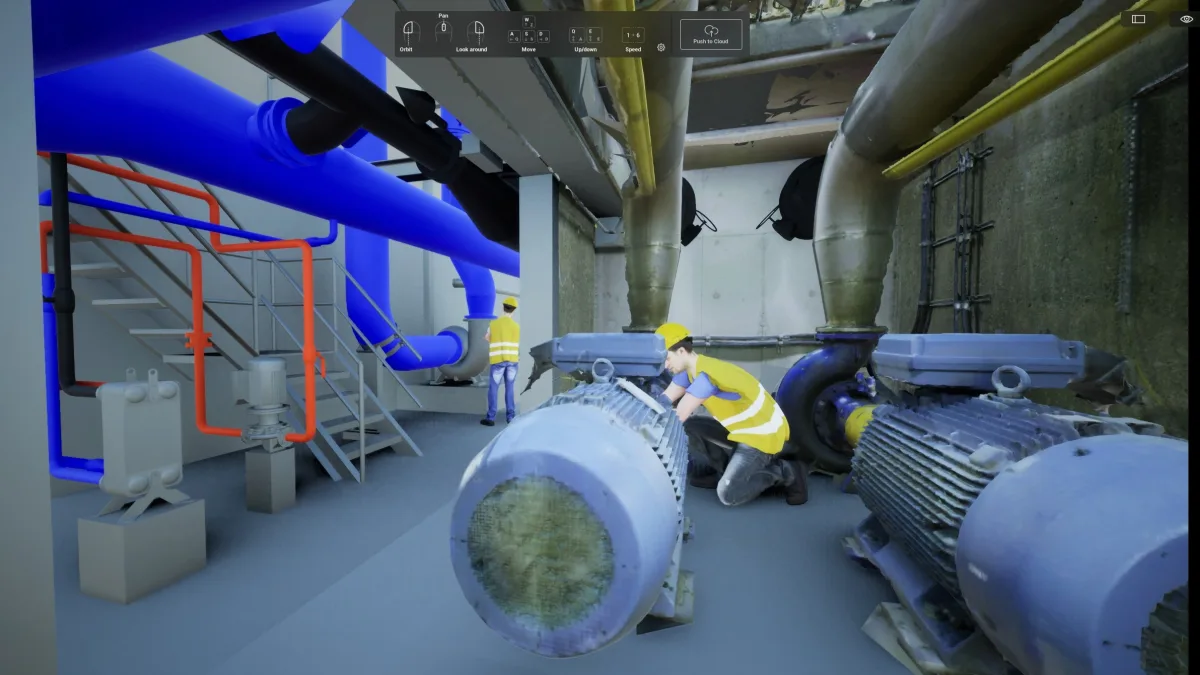VR has major benefits for design

The technology of virtual reality (VR) was developed by video game designers to enhance the experience for those who play video games. Nowadays, VR is also used for training pilots and surgeons, as well as architects. FVB recently started using VR for designing facilities.
“This allows us to give the customer the opportunity to move around in the model at an early stage and look at the design, which is even clearer in VR as the experience is actually to scale. The earlier we can get feedback, the more cost-effective the projects will be,” says David Jonsson at FVB.
FVB’s investment in VR is a natural extension of the company using laser scanning for documenting a facility in 3D.
“When we use a laser scanner, we can measure everything you see in the facility and put these values into a 3D model in the computer. When we then move on to design, we can do it with better precision and deal with other things in the building, such as existing installations. This allows us to design correctly from the beginning,” says David Jonsson.
The laser scanning results in what are known as point clouds, which create very large files. However, many customers cannot receive or work with such heavy files.
“We have now found a way to make these files lighter and more useful. We make the points into surface models, optimize them, and then add photos to the surfaces. We can then send them to the customer or look at them with VR headsets,” says David Jonsson.
The advantage comes from combining existing, changed, and new elements in the same document. The laser scanned model shows what the current reality looks like, while the CAD-drawn model adds the new parts that FVB has designed. It can also deal with changing or removing existing parts, such as when parts of the building are to be demolished.
“When you put on the VR headset, you get an entirely different feel for how it will be in reality compared with looking at a traditional model on the computer. For example, you can walk around and feel whether it is crowded and how it will look, because you are standing in the room,” says David Jonsson.
When different people go into the VR environment, they see different things. For example, operations and maintenance technicians can see if an existing maintenance step is blocked in the new model.
“We then solve this with a simple adjustment of the model instead of an expensive rebuild,” says David Jonsson.
One of the projects FVB has used VR for is E.ON’s renovation of a production facility for district cooling in Sweden. It is a fairly major renovation, with the removal of a spray-type deaerator and an existing basin. In the space where the basin is currently located, pumps will be placed and the spray-type deaerator will be replaced with a tray-type deaerator.
“Several of my colleagues and I have used the VR headsets and experienced what the district cooling facility that we are now renovating will look like,” says Lennart Bolin. He continues:
“The installation is already complete in a part of the facility where FVB has designed the renovation of a refrigerant cooler. Laser scanning and VR minimize sources of errors, which is very useful. The biggest advantages I see are that we save both time and money,” says Lennart Bolin.






